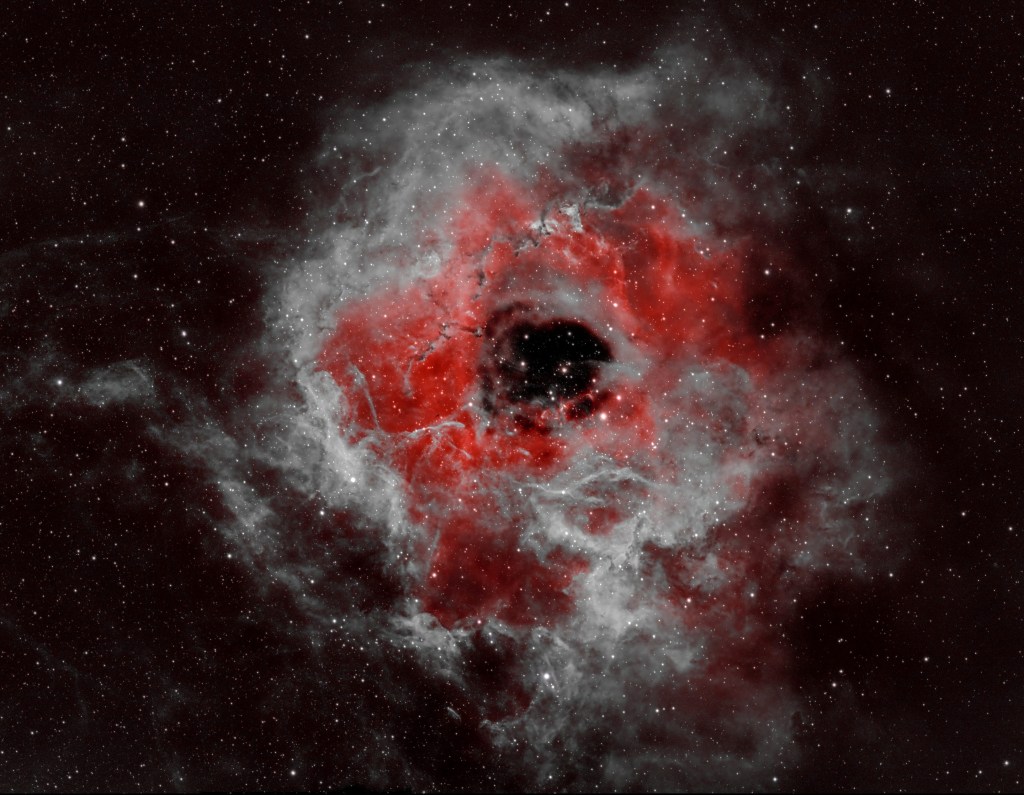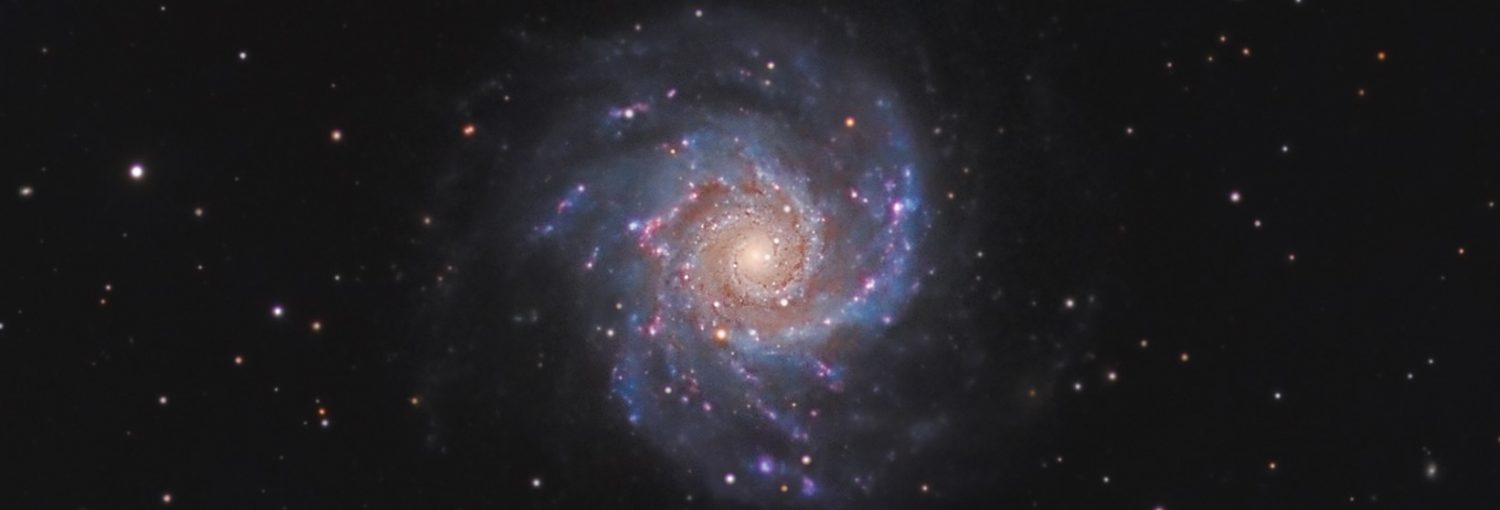
Like many astrophotographers, the Rosette Nebula holds a special attraction for me; it’s size, details and colours produce a perfect narrowband target. I revisited the old favourite again this year for the fourth time since 2015 (+2017 & 2018), in an attempt to capture even better its unique and dynamic beauty using newer equipment, skills, and techniques.

Located approximately 5,000 light-years away, this vast cloud of gas and dust has been sculpted into a distinctive rose-like shape. The central star cluster (NGC 2237) has blown-away a large hole within the surrounding molecular cloud (NGC 2244), which all together is some 1.7 degrees or 150 light-years in diameter. Numerous star-producing dark Bok globules are visible along the upper-left, central quadrant of the nebula, collectively referred to as the “Carnival of Animals”.

The skies this winter have been poor and, as a result, imaging possibilities have been very limited. However, over five nights from January to March I was eventually able to obtain 9-hours of Ha, OIII and SII integration time which, moreover, produced a good data set of 10-minute exposures.

I’m very pleased with the final SHO image (top of the page), which successfully displays the intricate details and colours that arise from the aforesaid make-up and processes that makes the nebula so popular. Furthermore, experimenting with an HSS palette produced an alternative and exciting image of this rose of night sky (see above), that might be even more in-keeping with its given moniker. All-in-all, despite this year’s difficulties I’m satisfied that I gave the Rosette my best shot, which is definitely a cut above my previous attempts – though I fully expect to return again in a few years seeking further improvements.
| IMAGING DETAILS | |
| Object | Rosette Nebula NGC 2244 + 2237, 2238, 2239 & 2246 |
| Constellation | Monoceros |
| Distance | 5,000 light-years |
| Size | Approx. 100 light-years ~ 1.3o |
| Apparent Magnitude | +9.0 |
| Scope | William Optics GT81 + Focal Reducer FL 382mm f4.72 |
| Mount | SW AZ-EQ6 GT + EQASCOM computer control & Cartes du Ciel |
| Guiding | William Optics 50mm guide scope |
| + Starlight Xpress Lodestar X2 camera & PHD2 guiding | |
| Camera | ZWO ASI294MM CMOS sensor |
| FOV 2.87o x 1.96o Resolution 2.50”/pix Max. image size 4,144 x 2,822 pix | |
| EFW | ZWOx8 EFW & 31mm Chroma Ha, OIII, SII filters |
| Capture & Processing | Astro Photography Tool (APT), Deep Sky Stacker & PixInsight v1.8.9-2 |
| Image Location & Orientation | Centre = RA 06:31:55.304 DEC +05:00:56.913 Left = North |
| Exposures | Ha x18 + OIII x18 + SII x18 x 600 sec R x20 + G x20 + B x20 x 60sec Total Integration Time: 10hr |
| @ Gain 120 & 30 Offset 21 @ -15oC | |
| Calibration | 5 x 600 sec Darks 10 x NB Flats & Dark Flats @ ADU 32,000 |
| Location & Darkness | Fairvale Observatory – Redhill – Surrey – UK Typically Bortle 5-6 |
| Date & Time | 19th January, 12th February, 6th 7th March 2024 @ +20.00h |
| Weather | Approx. <6.0oC RH >=70% 🌙 <+6% Waning |
